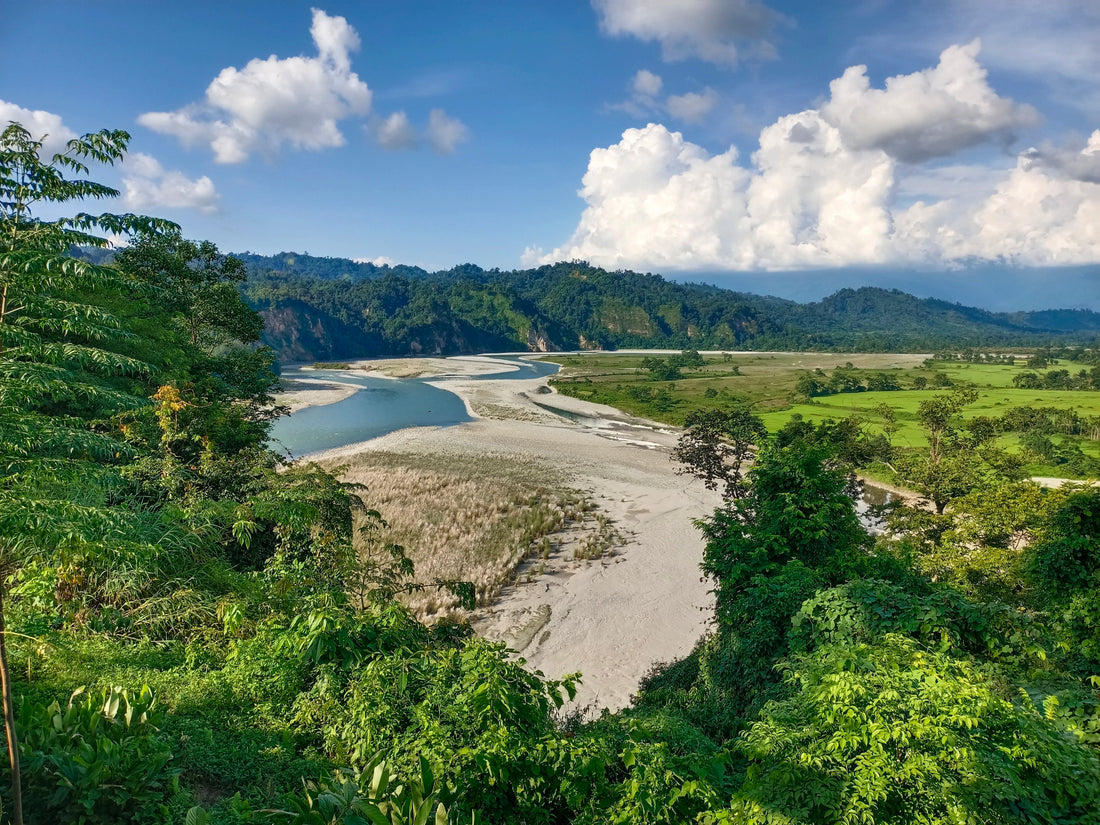Nestled amidst the verdant landscapes of Assam, India, the Dehing River emerges as more than just a picturesque waterway; it stands as a silent witness to a significant chapter in the region's tea industry. The historical resonance of the Dehing River unfolds like a narrative, weaving tales of trade, growth, and the lush tapestry of Assam's tea heritage.
Tea's Voyage on the Dehing River: In the 19th century, during the heyday of the British colonial period and the burgeoning tea industry in Assam, the Dehing River played a pivotal role in shaping the destiny of the region's tea leaves. As the demand for Assam tea gained momentum, the river emerged as a vital waterway for transporting harvested tea leaves.
Boats as Timeless Vessels: Boats, with their weathered sails and seasoned navigators, became the silent heroes of this tea odyssey. Commonly used to transport the tea leaves downstream, the gentle flow of the Dehing River facilitated a remarkably smooth transportation process. This method proved indispensable in an era when the infrastructural arteries of roads and railways were yet to mature into the networks we know today.
A Natural Supply Chain: Tea gardens lining the banks of the Dehing River reaped the benefits of this natural transportation route. The river seamlessly integrated into the tea industry's supply chain, offering a lifeline that streamlined the logistics of trade. This symbiotic relationship between the river and the tea gardens became a catalyst for the growth and expansion of Assam's flourishing tea plantations.
Evolution of Transportation: As time unfolded and transportation infrastructure evolved, other modes of conveyance gradually took the forefront. Roads and railways emerged, replacing the once-dominant role of the Dehing River in tea transportation. Despite the transition, the historical connection between the river and the tea industry retained its significance, leaving an indelible mark on Assam's tea heritage.
Dehing River Today: In the contemporary landscape, the mention of the Dehing River evokes images not only of a scenic waterway winding through lush landscapes but also of a bygone era when tea embarked on its journey down the river's tranquil currents. The river, though no longer the primary mode of transportation, stands as a testament to the resilience and adaptability of Assam's tea industry.
As we gaze upon the meandering course of the Dehing River, we glimpse into a time when boats carried the promise of Assam tea to markets far and wide. The river, now a symbol of nostalgia, continues to echo the legacy of an era when the tea trade sailed upon its historic waters, leaving an enduring imprint on the rich history of Assam's tea industry.

